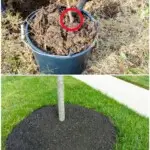
It’s easy to think that nature will just take its course when you’re planting a tree. After all, forests have been growing for millions of years without human help, right? But there are a surprising number of tree-planting mistakes that can turn your dream of nurturing a mature tree from a tiny sapling into a gardening nightmare.
Planting trees seems straightforward at first glance, but adding them to your landscape has nuances that significantly impact the health and growth of your new green asset.
Trees are a significant commitment of time, money and effort.
Trees aren’t cheap, and planting them means several hours of hard physical labor. So, let’s shed some light on these frequent mishaps so you can avoid problems from the start.
1. Planting the Wrong Trees
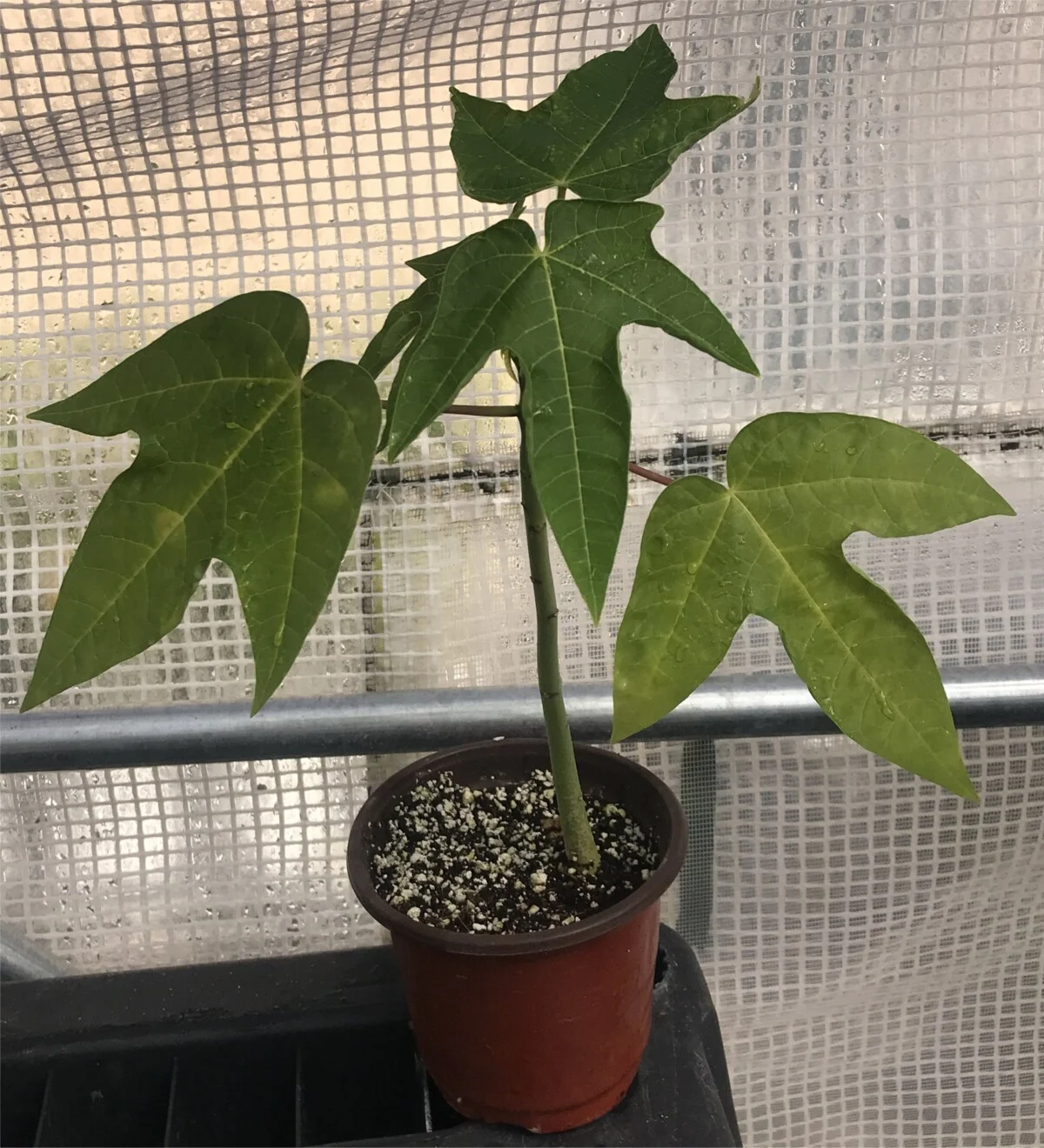
While it’s awesome that so many online nurseries offer a wide range of trees you can purchase from home, this approach also has some serious pitfalls.
Pictures of gorgeous, exotic-looking trees catch your eye, and the next thing you know, you’re receiving boxes of beautiful specimens on your doorstep that will die within months of planting.
Why? It’s not you. It’s just that the tree wasn’t suited for your local climate.
Selecting an inappropriate tree species for your specific environment is a common tree-planting mistake that gardeners make. The key is to choose a tree that is compatible with your local climate, soil conditions, and wildlife pressure.
For instance, a magnolia tree that thrives in a warm, humid climate like Atlanta, Georgia, will struggle in arid conditions like El Paso, Texas — even though they are both in Zone 8.
It’s crucial to do your research. Before ordering trees online, check with your local ag extension on the types they recommend for your local area.
2. Planting in the Wrong Spot
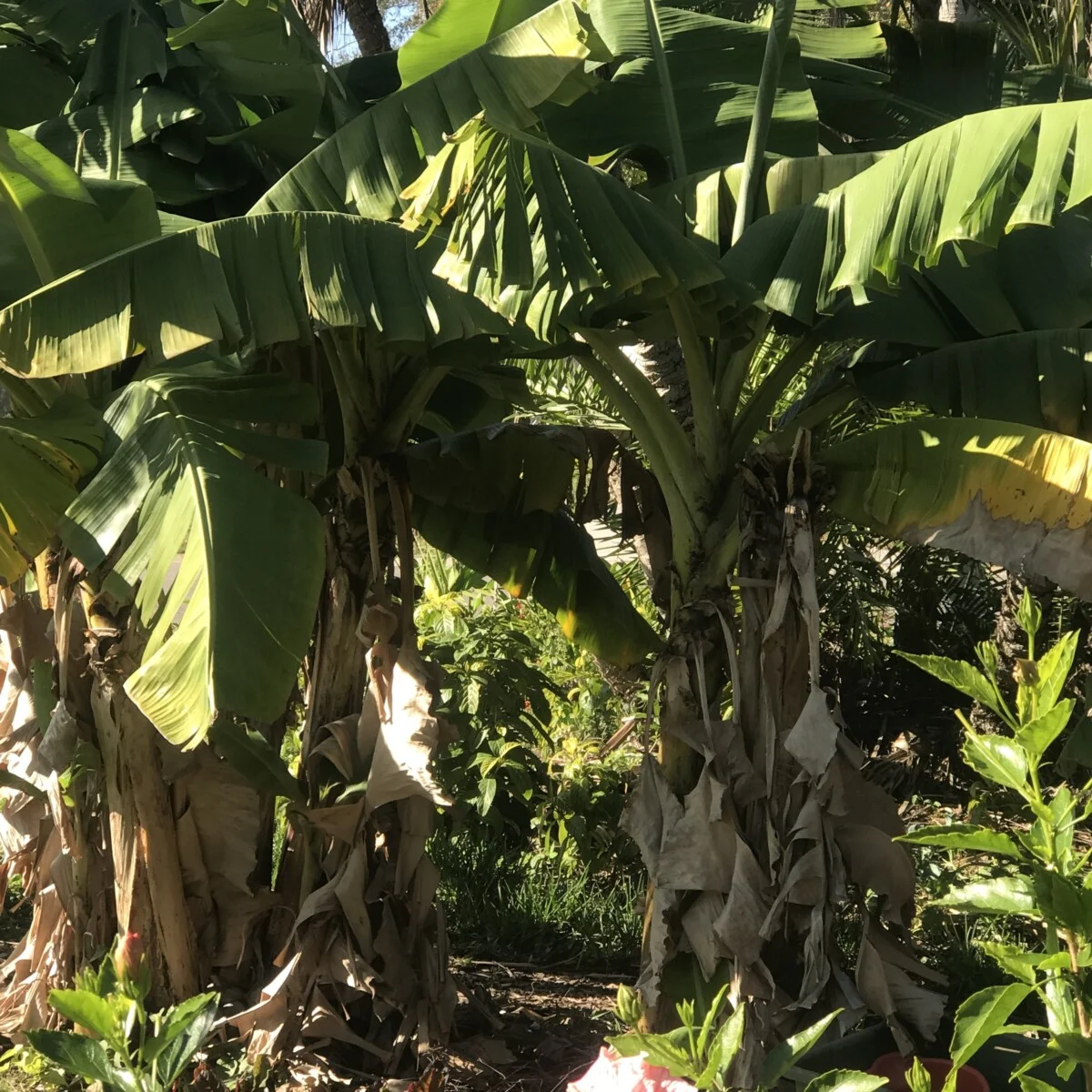
Even the right tree can suffer if planted in the wrong place. You need to carefully consider what your tree needs before planting.
Weeping willows make beautiful specimen trees. However, they’re thirsty plants and won’t thrive on high, dry spots in the landscape.
Fruit trees need lots of sunlight; some won’t stand up to strong winds and may be better off in a more protected spot. For example, while not technically “trees,” banana plants will thrive better in clusters or against a fence than they will standing in the middle of the garden for the sake of a little extra sunlight.
Where you plant your trees greatly affects their health and growth. Most trees have evolved to fit specific niches, and you’ll need to replicate their optimal environment for them to flourish.
3. Planting at the Wrong Time
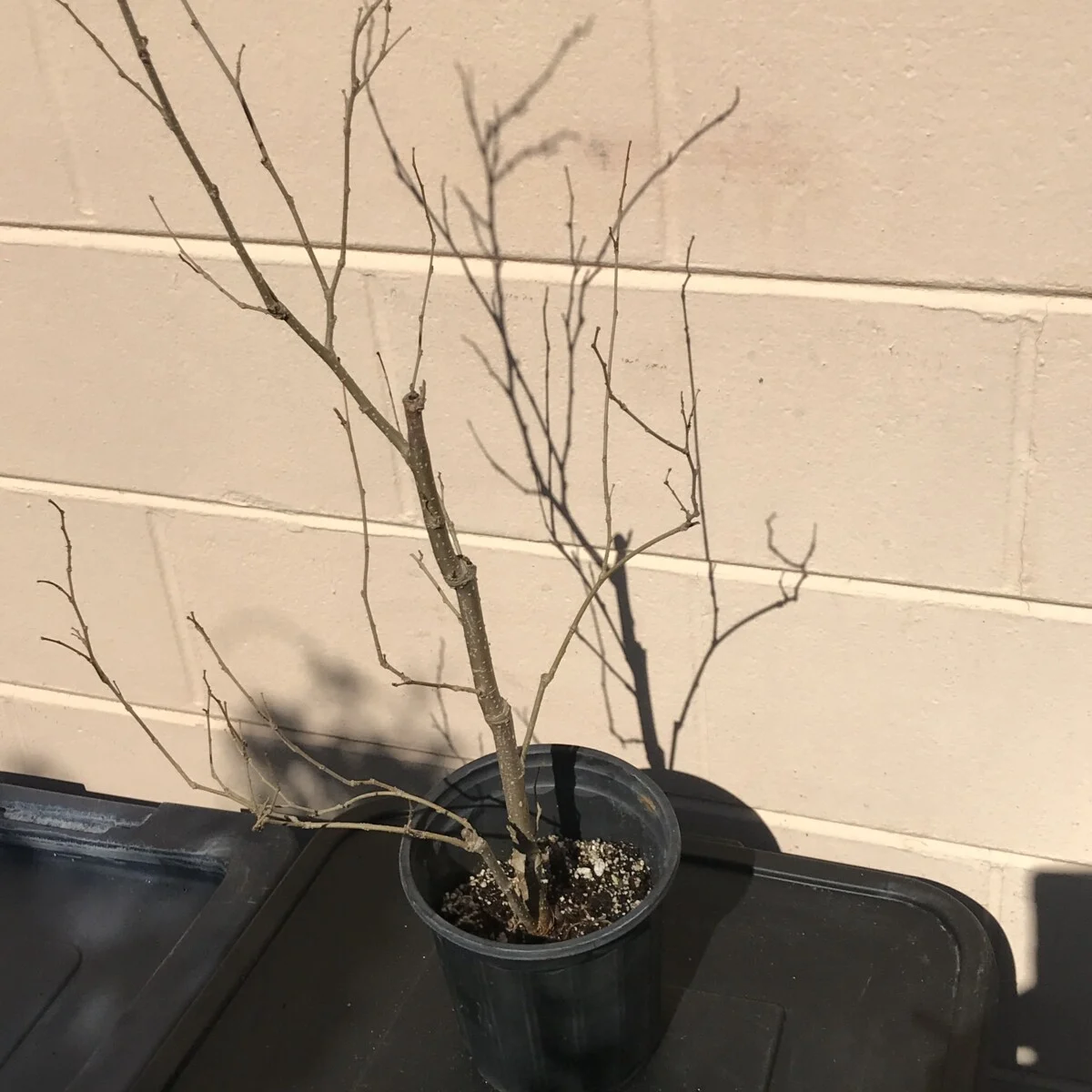
There are so many potential mistakes you can make when it comes to timing. There really isn’t any “one-time-fits-all” formula for it, either. The best time to plant depends on the type of tree, its stage of development, and your climate. For much of the country, however, it’s relatively safe to plant trees when they’re dormant. Many nurseries sell bare-root dormant trees for planting in the fall or early spring.
Planting them in the fall allows them a chance to put down roots before the temperatures drop in winter. Planting them in the early spring gives them a chance to “wake up” with the rest of nature and enjoy the rush of sap rising with the longer days and warmer weather.
But this approach doesn’t work with every tree or in every instance.
For example, here in Florida, many trees don’t go dormant at all. My Barbados cherry tree is tropical in origin and never loses leaves. Likewise, my citrus trees aren’t deciduous, either. They flower in January every year.
Oh, they may look cold and very sorry for themselves, all right. But they’re not dormant.
Since our climate is mild and most tropical zone trees don’t bother with a dormancy period, I generally plant them whenever it’s not extremely cold or extremely hot. The same approach works with fully leafed-out trees in temperate climates. If the tree is actively growing, you can plant in the spring through the fall if you’re rainfall is adequate or you’re prepared to water religiously.
However, it’s not what I would recommend for small seedlings. Small seedlings purchased during the spring or summer should remain in their containers under careful supervision until they’re more mature. You may choose to plant them out the following spring once they break dormancy.
4. Planting Trees with Bound or Girdled Roots
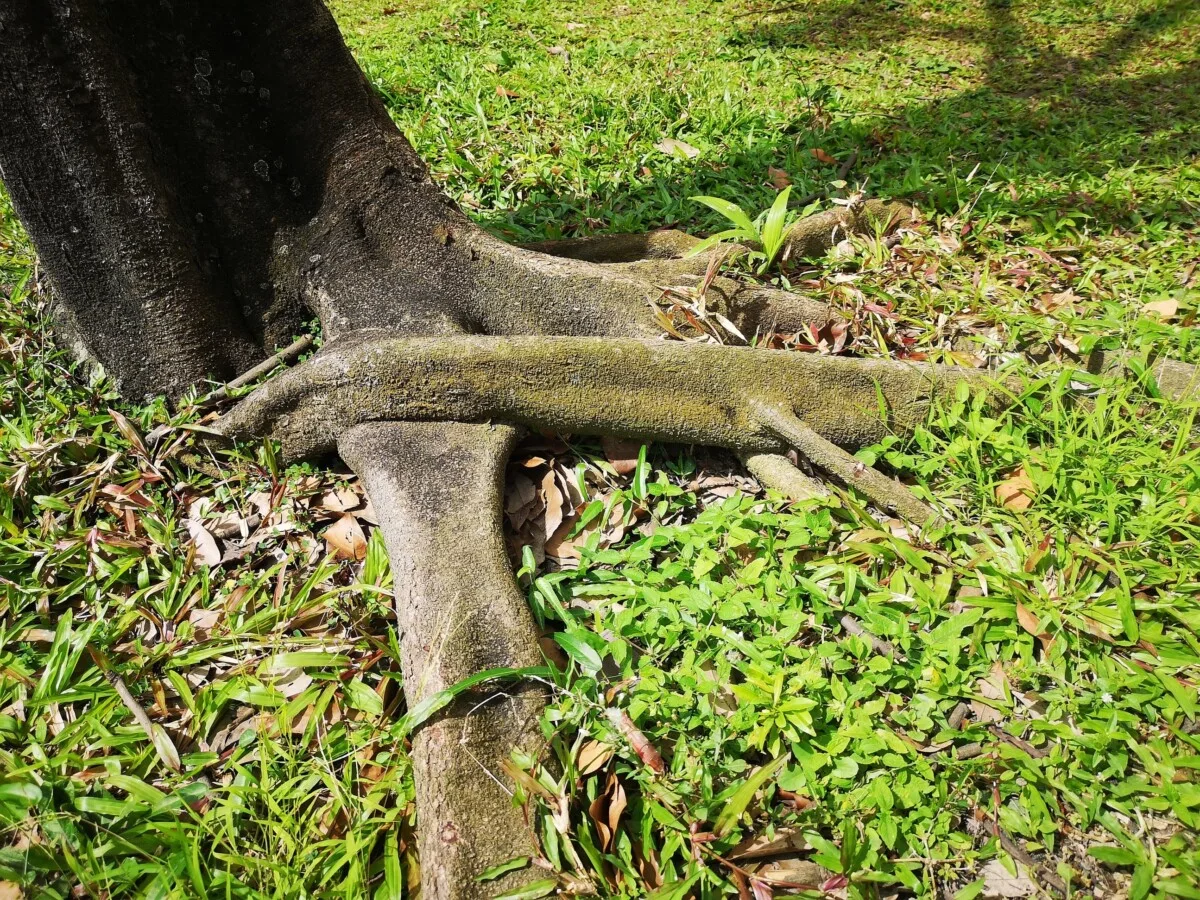
Bound roots can cause a lifetime of misery for your trees, and it’s a condition that can even be fatal. As small trees grow in their containers, the roots begin to circle when they run out of room in the pots. Eventually, these roots will start to wrap around the lower end of the trunk, called “girdling,” and this interferes with the flow of sap from roots to canopy.
Ignoring this problem with a fresh-from-the-nursery specimen results in a slow-growing and persistently sickly tree.
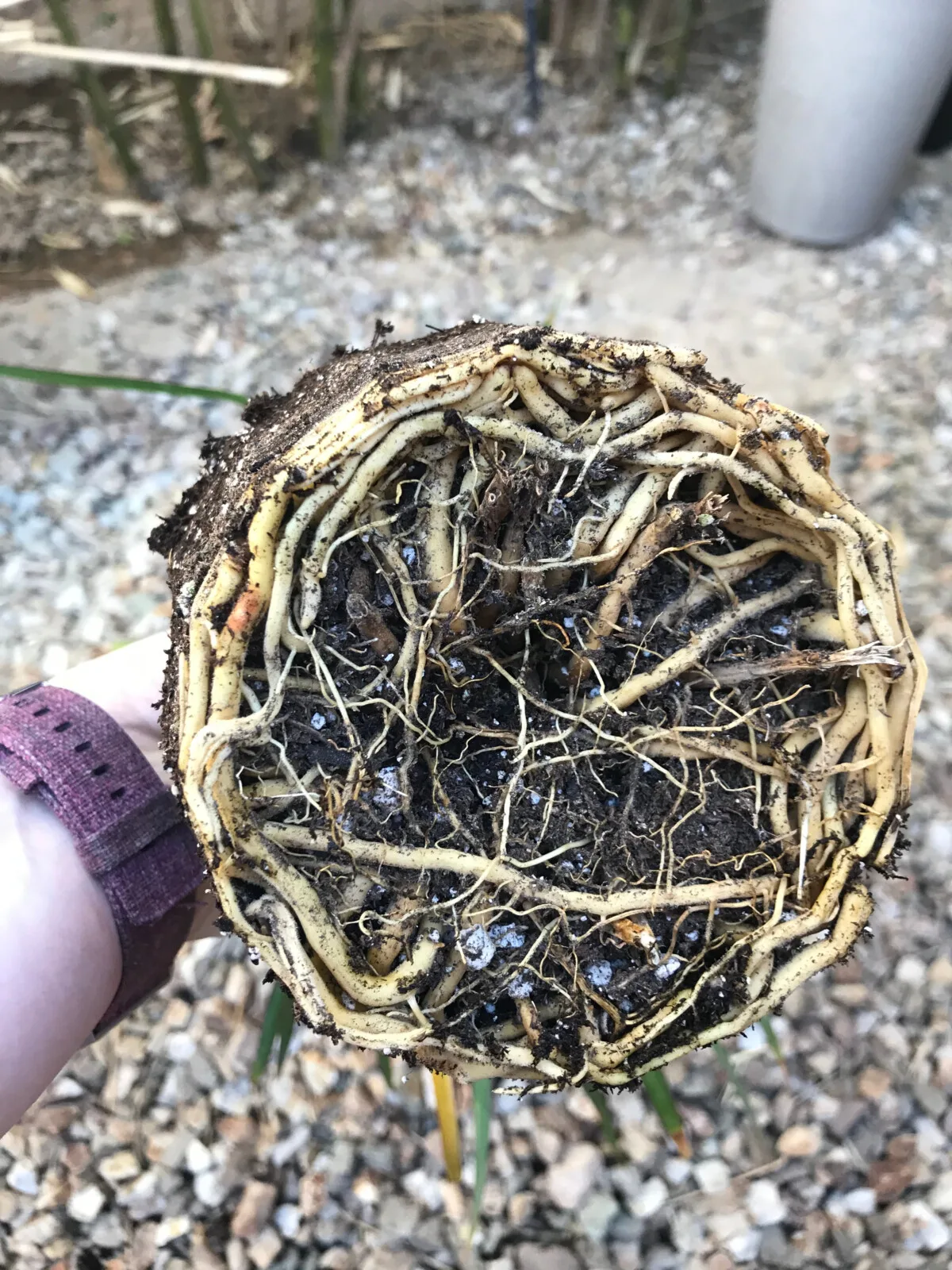
Before planting, gently tease the roots outward or even snip the overly coiled ones.
If possible, always inspect the root ball before purchasing new trees. Along with the cost savings, avoiding this conundrum is really one of the best reasons to purchase bare-root trees when possible.
5. The Planting Hole is Too Narrow
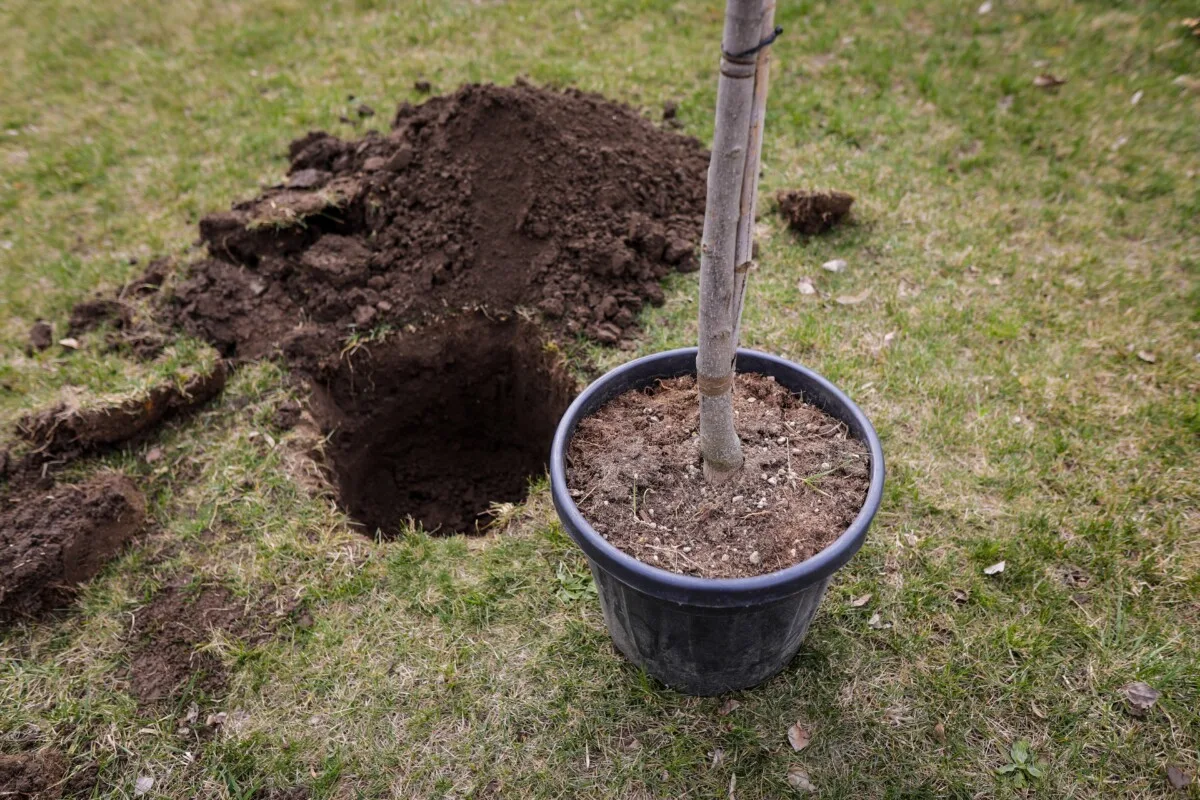
Your new tree needs space to spread out and anchor itself in the soil. It needs to grow roots laterally for stability, so you’ll need to give it plenty of room to spread out. If your planting hole isn’t wide enough, the new roots will have to fight through compacted soil to spread out. Digging a hole that’s twice as wide as the root ball also provides pockets of air.
It may seem counterintuitive, but plant roots need oxygen to thrive.
Providing a nice wide hole adds pockets of air that make it easier for your new tree to get oxygen to its roots and helps them become established more quickly.
6. Planting Hole is the Wrong Depth
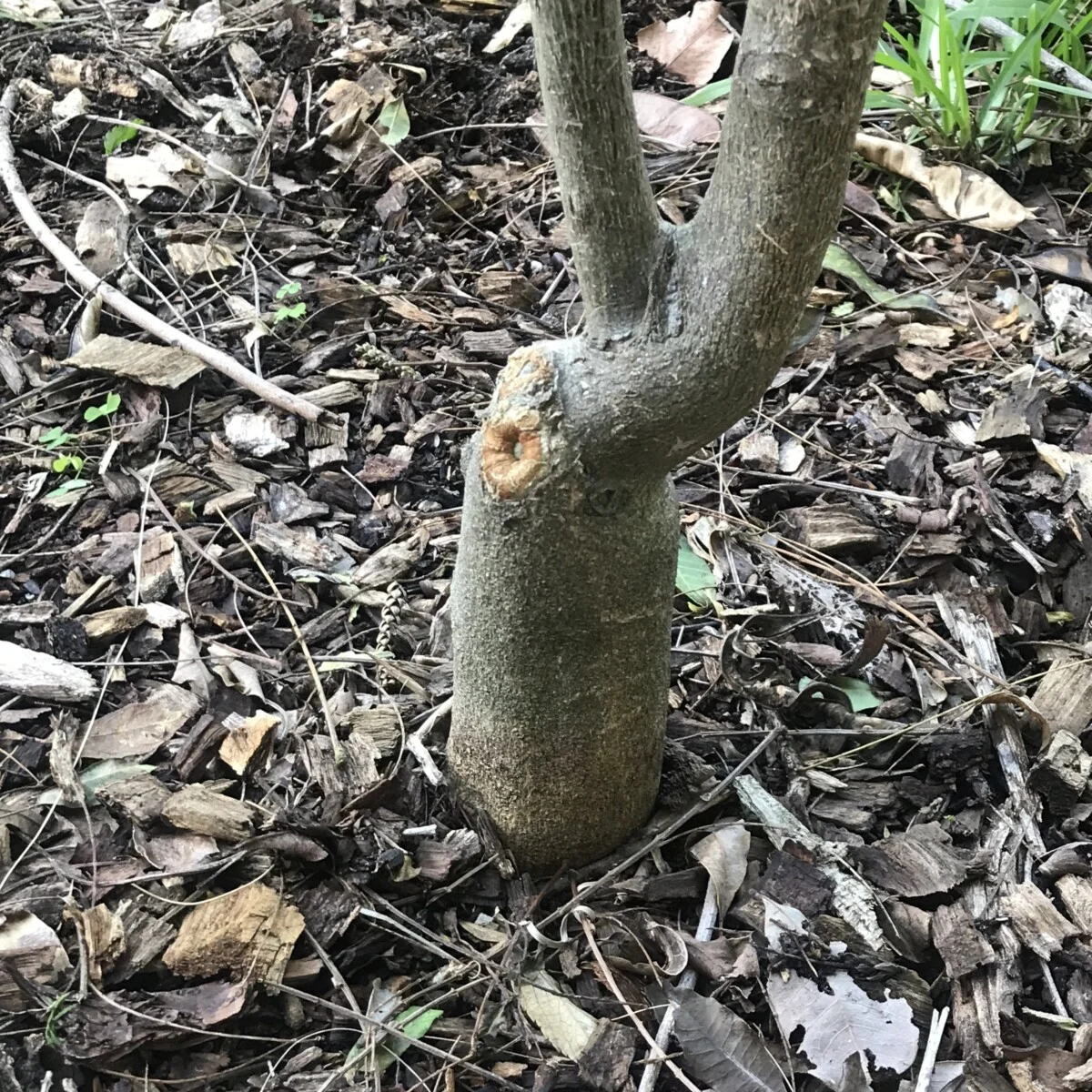
More gardeners mistakenly dig the hole too deep than those who dig them too shallow.
For most trees, you’ll want to only dig as deep as needed to plant the tree at the same level as it was in the container.
Look for the root flare – where the roots begin to spread out and give a “flared” appearance to the trunk. You’re safe planting the tree a bit proud of the soil if the area is particularly damp. This will improve drainage around the tree and help prevent root rot from killing the tree.
You can also sink them into a shallow basin if you’re planting in arid soils. It’s a well-known technique in regions such as the Southwestern U.S. and the Middle East. The area around the tree gently slopes inward, while the trunk of the tree is slightly above ground level. This provides a reservoir of moisture in arid regions.
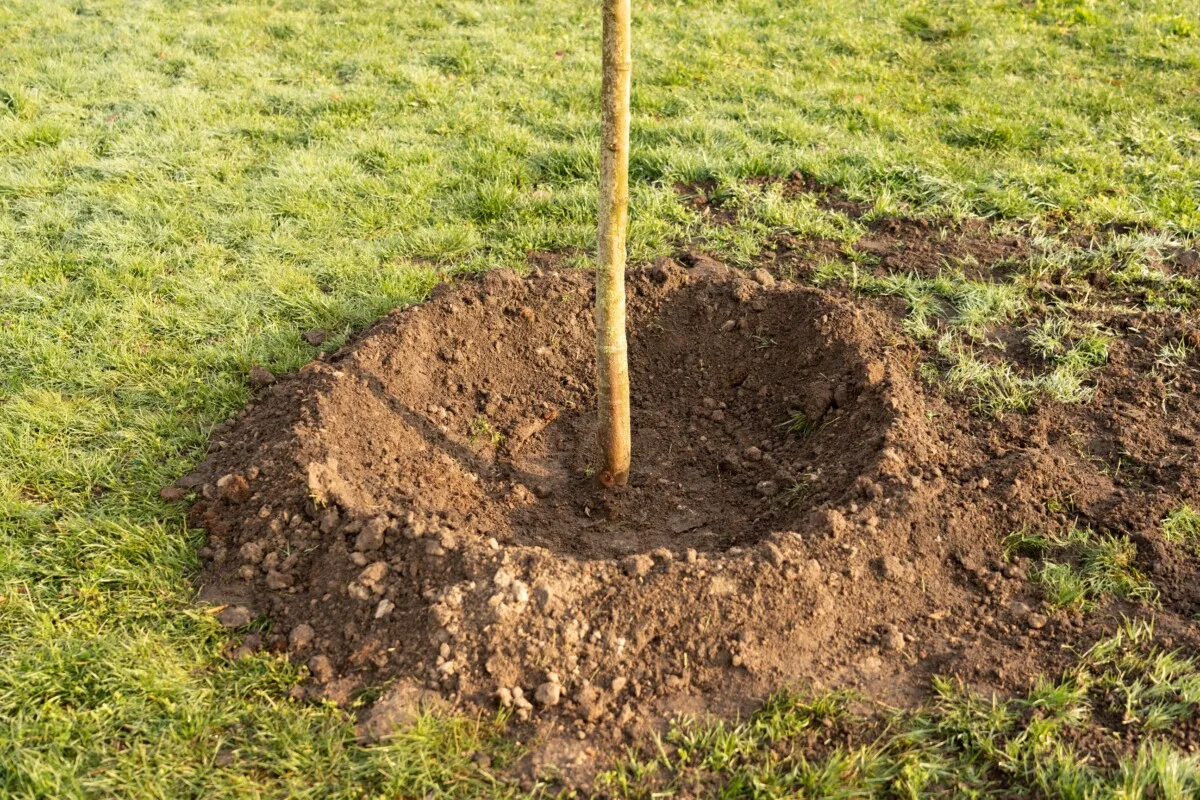
In both cases, make sure that you don’t pile soil around the trunk that covers the root flare. Nature deposits all sorts of foodstuffs for trees above ground, and it’s up to the soil life below to process it and transport it down to the root level.
Tree roots will naturally seek nutrients in the topsoil over the flare, and they may grow into that soil over the flare and compact the trunk.
Another big mistake with depth that many gardeners make is burying the graft below the soil.
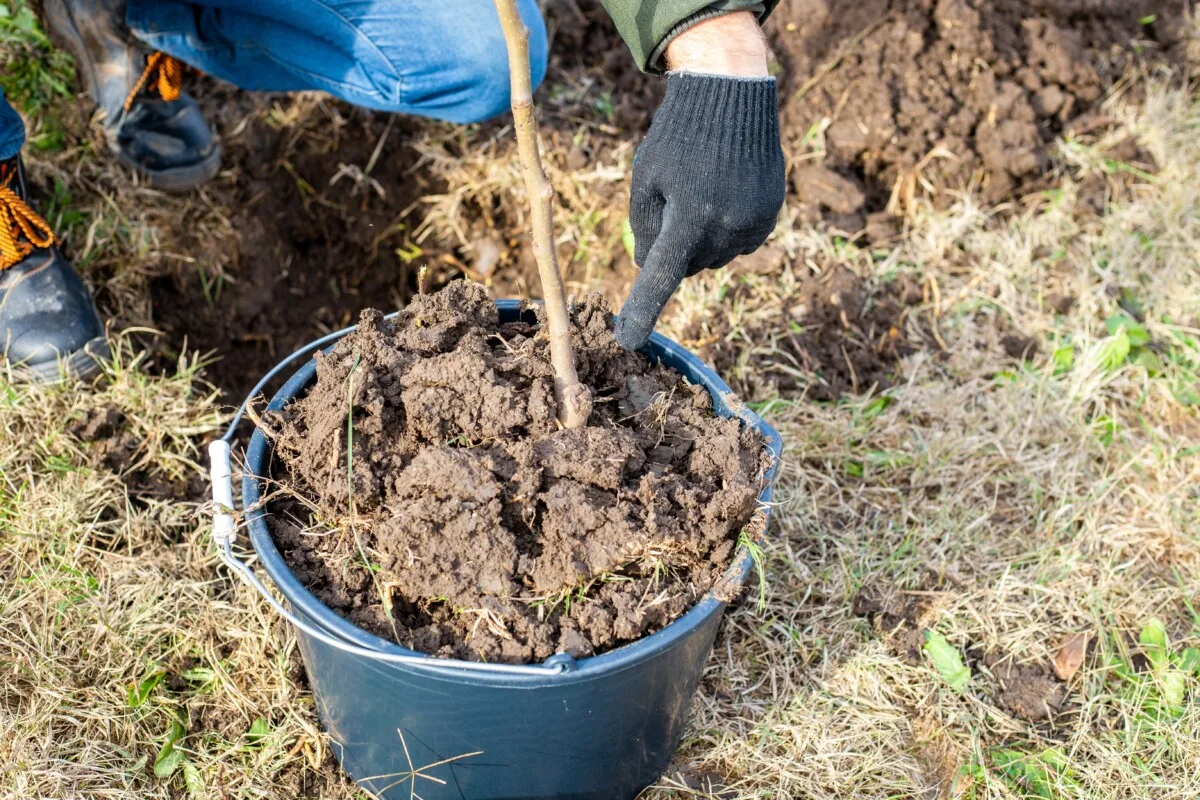
Grafted trees provide the best of both worlds. They offer the health and resilience of a native species root stock with the fruit and flower characteristics of a hybrid scion.
Many gardeners don’t like the look of a tree graft, so they bury it in the soil or cover it with mulch.
At best, burying the graft will stimulate the hardier stock plant to sprout and grow in favor of the preferred scion. At worst, it can cause the bark to rot and introduce disease, effectively killing the tree.
7. Using Compost or Fertilizer
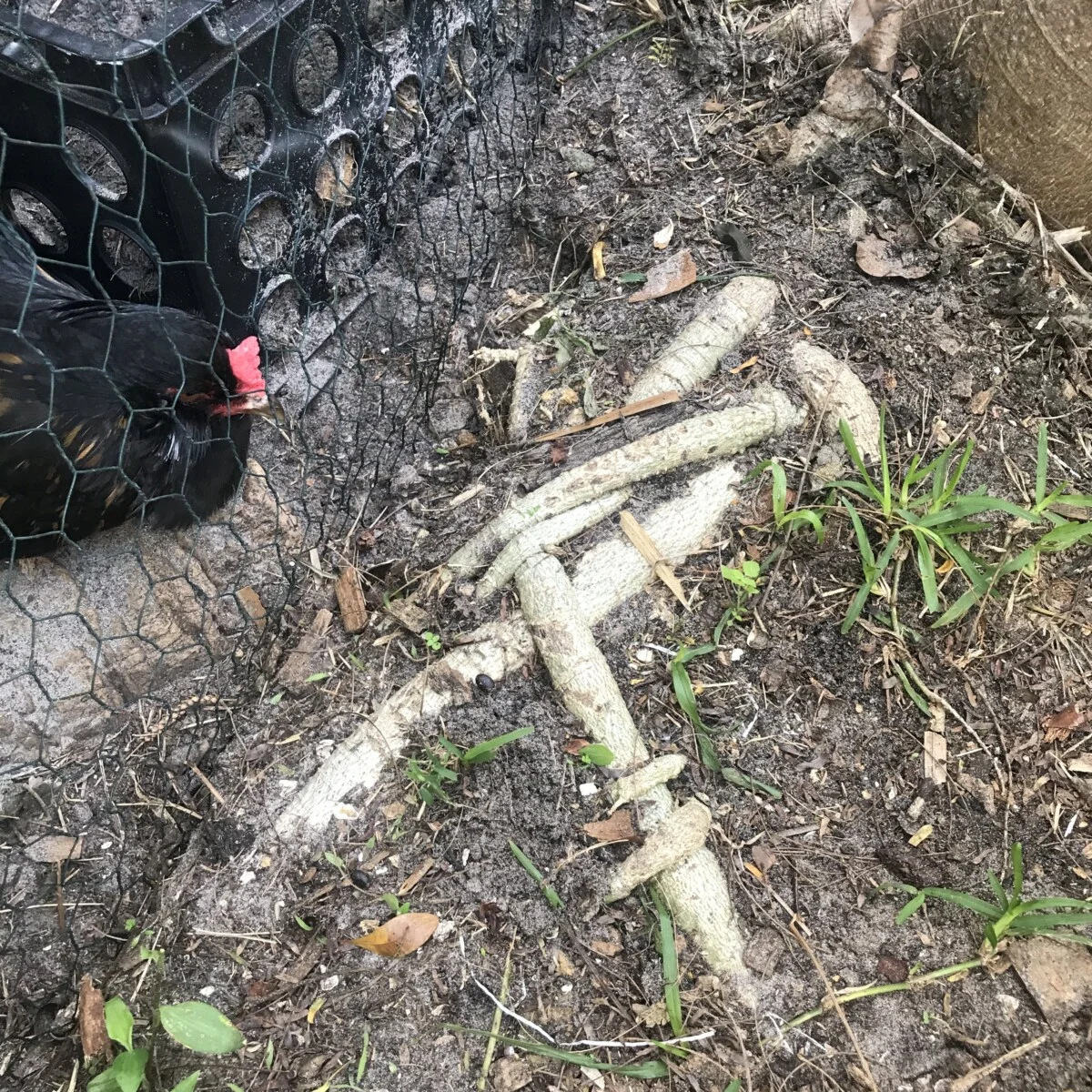
You may have heard about the recent trend of planting trees in square holes. The theory is that tree roots will react to a round hole the same way they react to a round pot. The roots will circle the hole and bind the trunk. This isn’t true, and so far, there isn’t any science to back this myth.
But what does cause tree roots to bind and circle in the ground is compost.
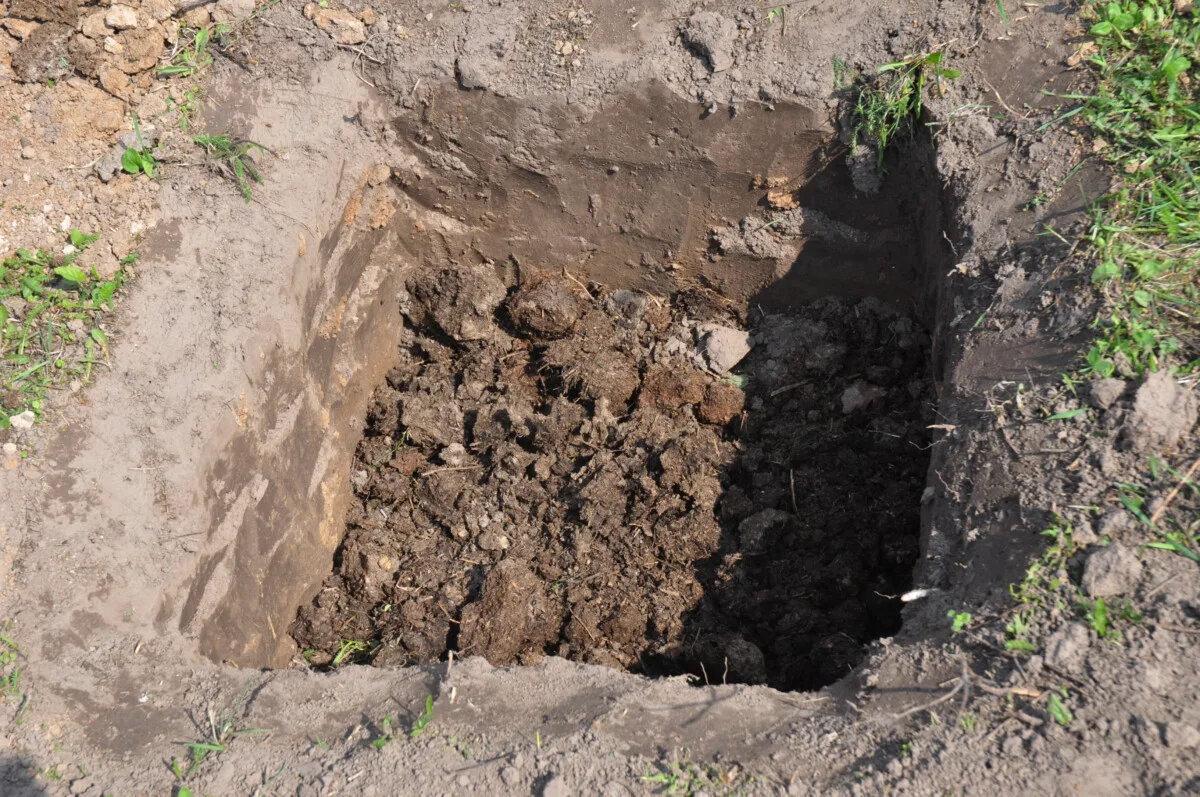
Yep. It’s true. Adding rich fertilizers and compost to the backfill in your tree-planting hole will cause the roots to circle. Just like any organism, they’re not going to work any harder than they have to when you’ve already provided them with plenty of rich food.
And since all this delicious nutrition is in a round hole, the roots end up circling it to lap it all up instead of spreading out to find other sources of food.
Adding compost or fertilizer to the hole is a very common tree-planting mistake.
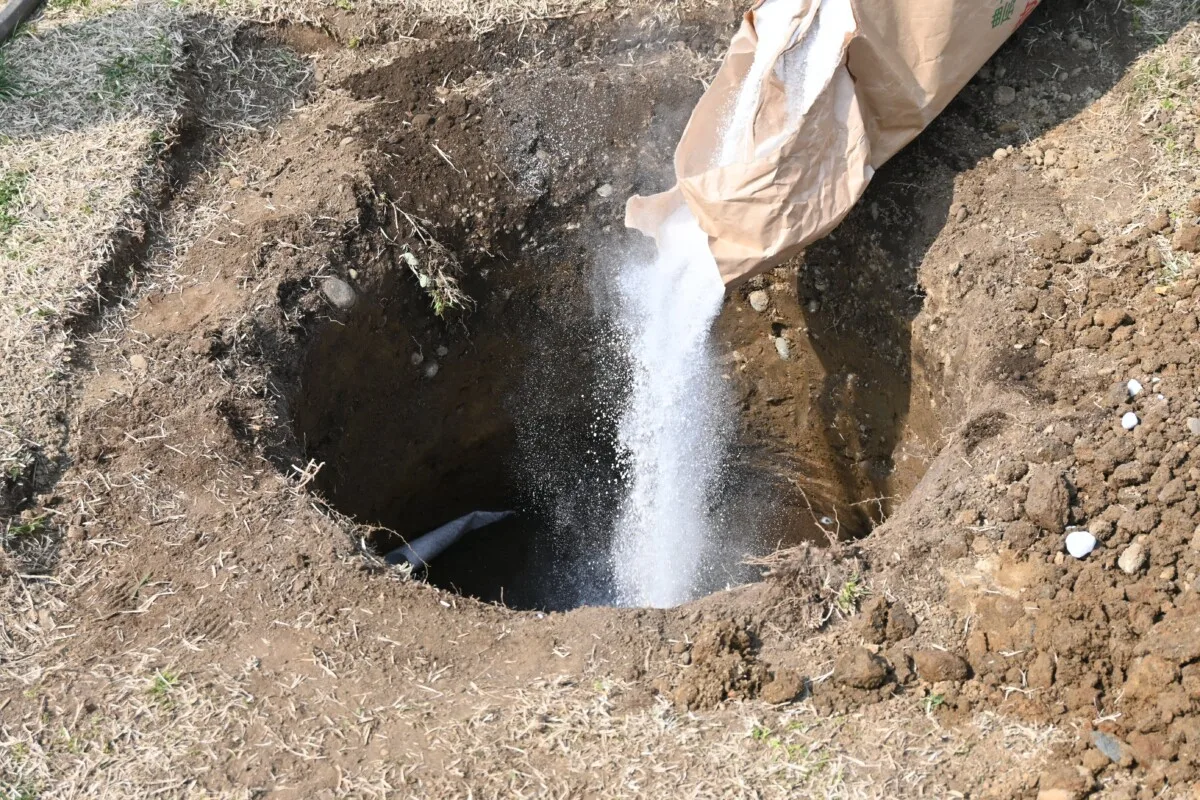
Tree roots need to spread out after planting to provide structural support as it grows. So, you need to make them work for it. If you drop a bunch of manure into the hole with the roots, they won’t spread out, and you’ll get a very unstable tree with no real anchor into the soil.
Instead, backfill your planting hole with the native soil you’ve just removed. If the soil is too heavy with too much clay, you can add some sand or grit to improve the drainage.
If you simply must add something to the planting hole, you can introduce a mycorrhizal fungi powder. Mycorrhizal fungi will establish a symbiotic relationship with the tree’s roots. While they don’t directly feed the tree right away, once the roots are inoculated with the fungi, the tree will be better poised to absorb the nutrients in the native soil.
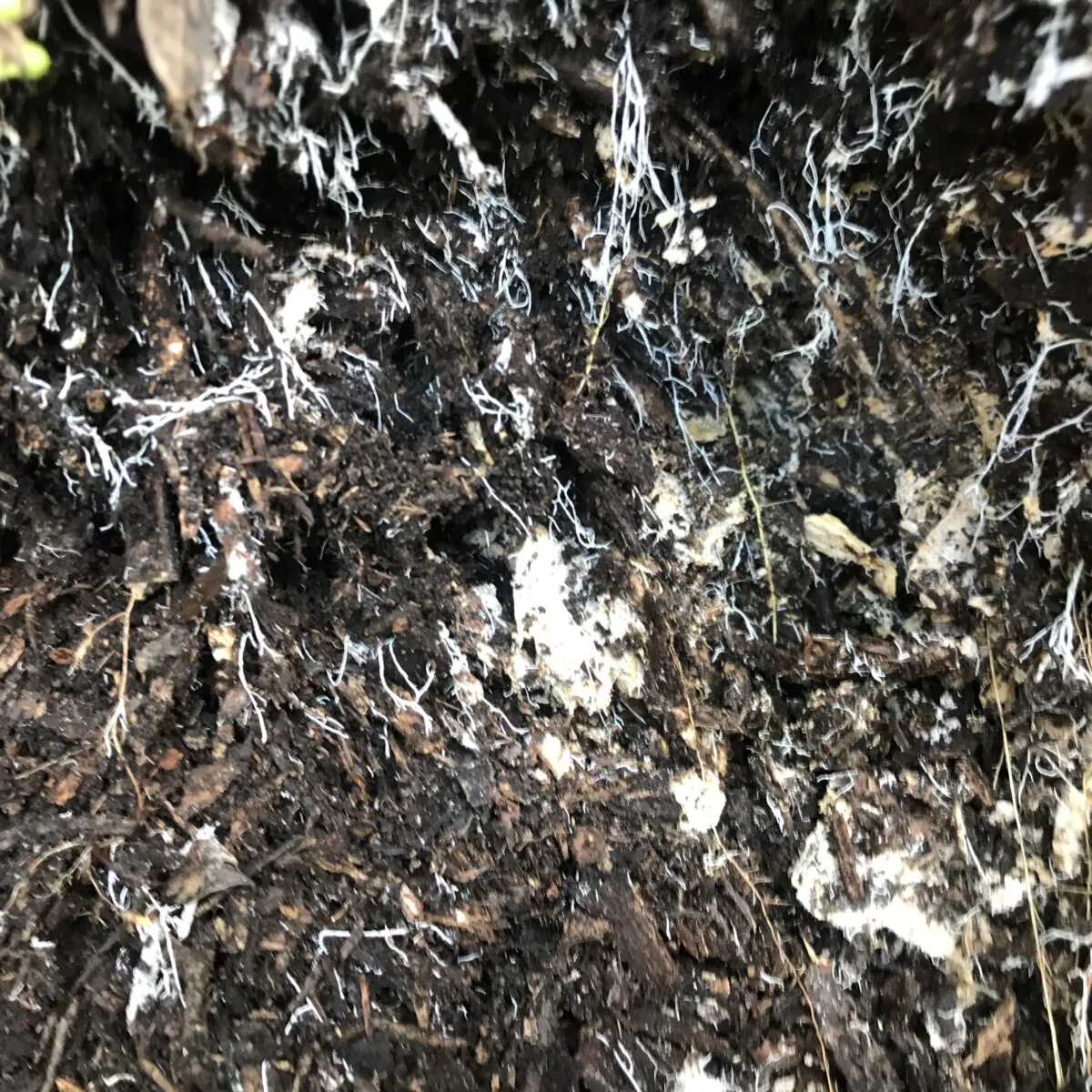
You’ll find these fungi in forested areas, where they break down and process tree debris into nutrients. Most urban and suburban gardens are too tidy for these fungi to thrive, so adding them to the surface of tree roots before planting can help get your tree off to a better start.
Tracey’s got a fantastic article on the wonders of mycorrhizal fungi and why you should inoculate your soil with it here.
You can also add compost on top of the soil to feed the microbes and other soil life around the new tree. They’ll need to process the nutrients before the tree can make use of them.
A healthy young tree will have no trouble sending out roots to seek these nutrients, which means it will establish more quickly and without girdling itself.
8. Failure to Mulch
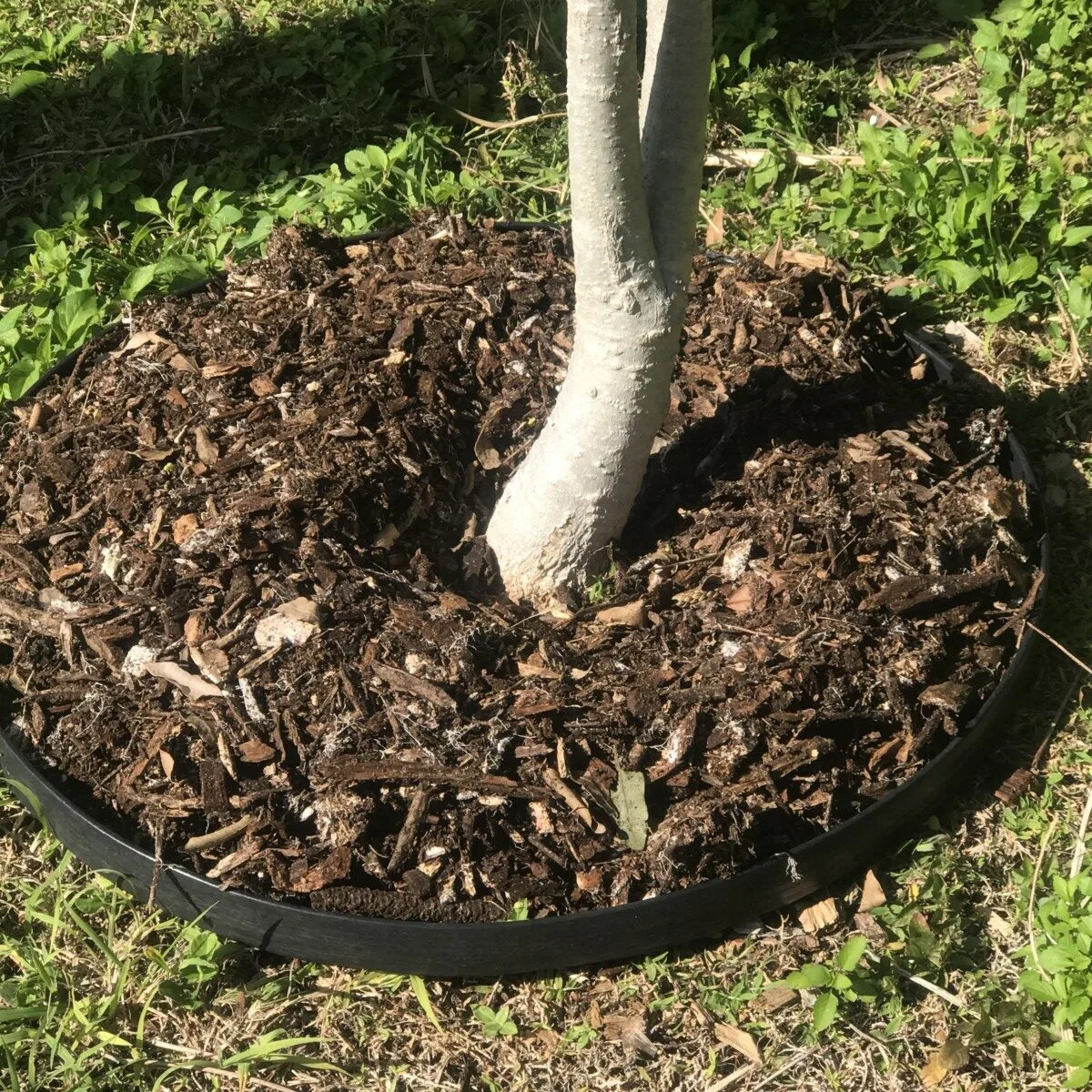
You wouldn’t send your child out into the world without a warm jacket, and you can say the same about young trees.
Mulching serves multiple purposes in the garden. It helps to retain moisture in the soil, it shields the soil microbes from the hot sun, and it reduces weed pressure.
But both jackets and mulch have to be appropriate to the climate. And like a warm jacket, it shouldn’t choke or suffocate your little tree.
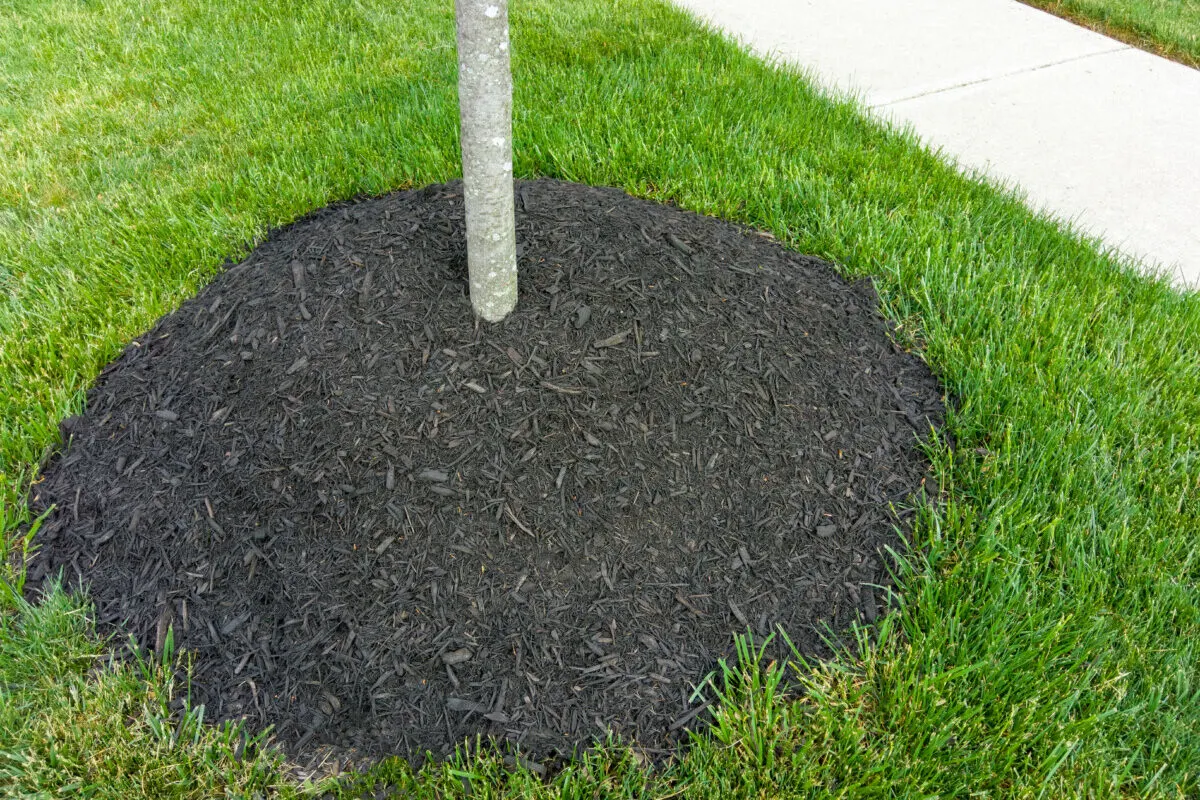
After planting, water the tree in well before applying mulch. Add 3 to 4 inches of mulch. Wood chips are best if you have them since they will encourage the growth of those mycorrhizal fungi. It’s also a more sustainable way to use excess woody debris in your garden. I have a small, electric wood chipper I use as needed to refresh the mulch around perennial plantings.
Avoid using an excessive amount or piling it directly against the tree trunk, where it can rot the base of the tree. Leave some breathing space around the trunk.
9. Improper Staking
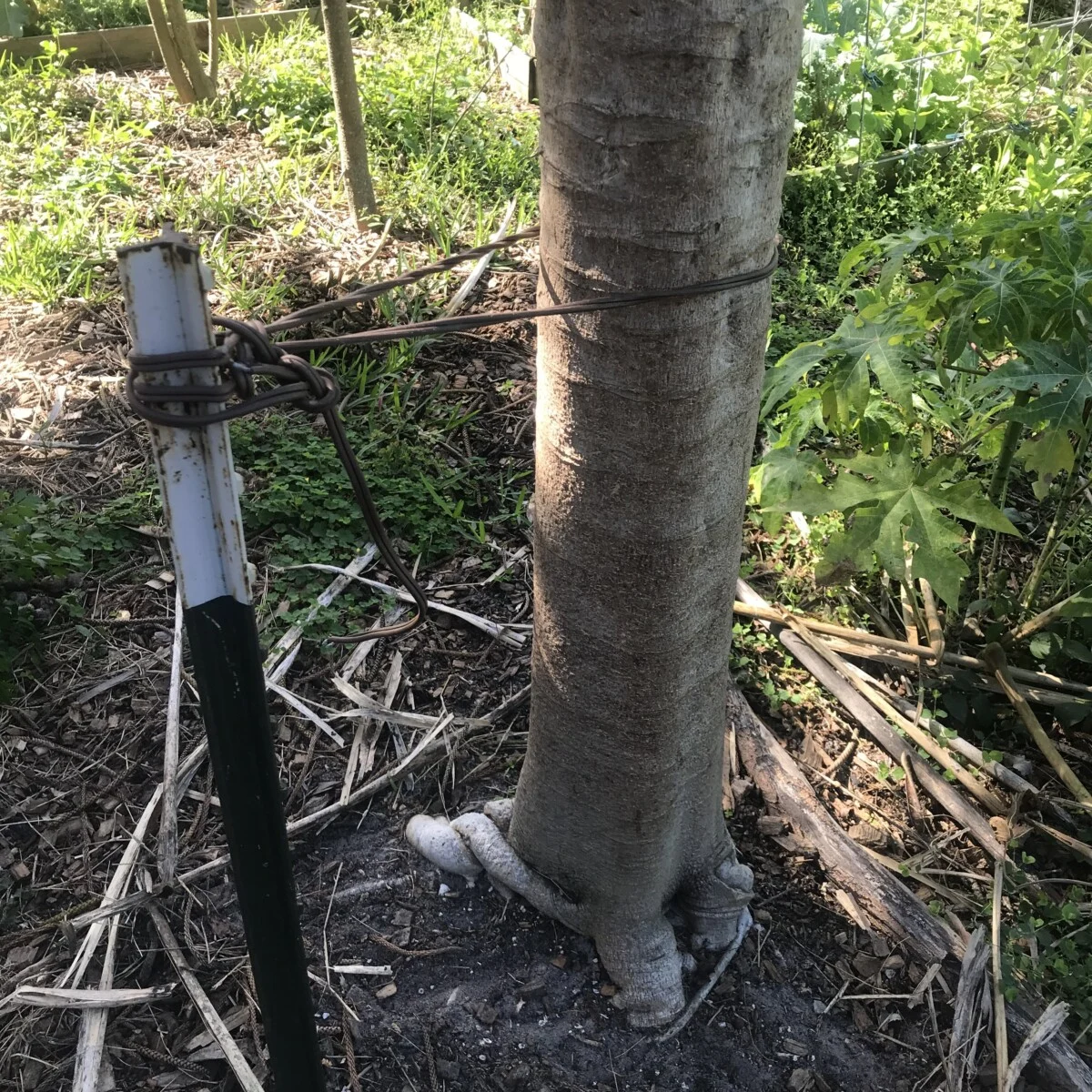
Staking is often a debated topic in tree planting.
While staking can provide support to young trees, especially in windy areas, it’s not always necessary and, if done improperly, can hinder the tree’s growth.
Over-staking or leaving the stakes in place for too long can make the tree dependent on the support, leading to a weaker trunk and root system.
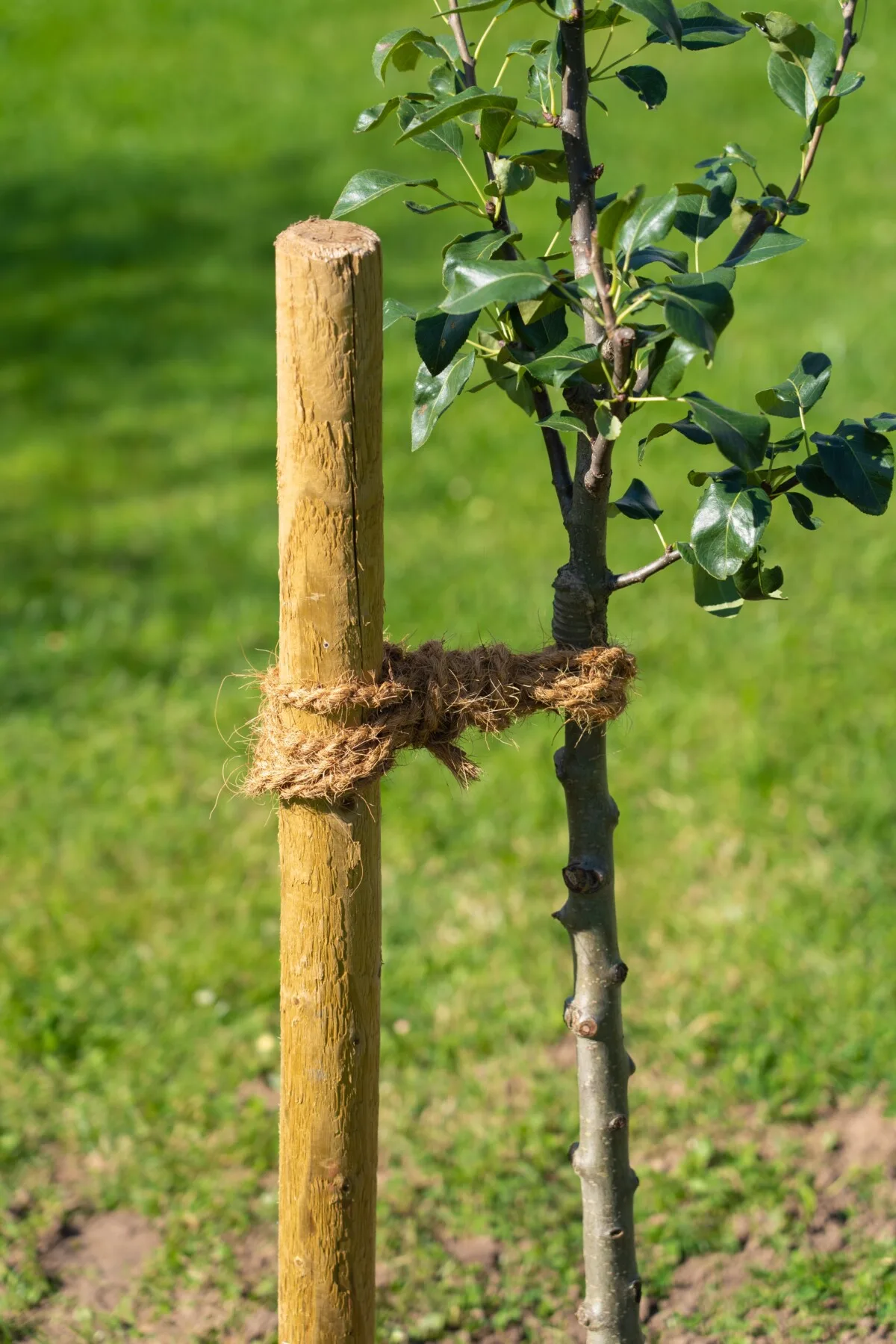
If your tree is planted in a windy area and you need to stake it, make sure that the straps allow some movement. While you want to prevent too much rocking in high winds, the tree needs to grow into its own stability. Make sure you remove it after the first couple of years once the tree is established.
This is a common tree-planting mistake made by even experienced gardeners. We staked up a papaya tree that got knocked down in Hurricane Ian, and now we’re afraid to remove the T-bar we used to hold it upright.
10. Failure to Water
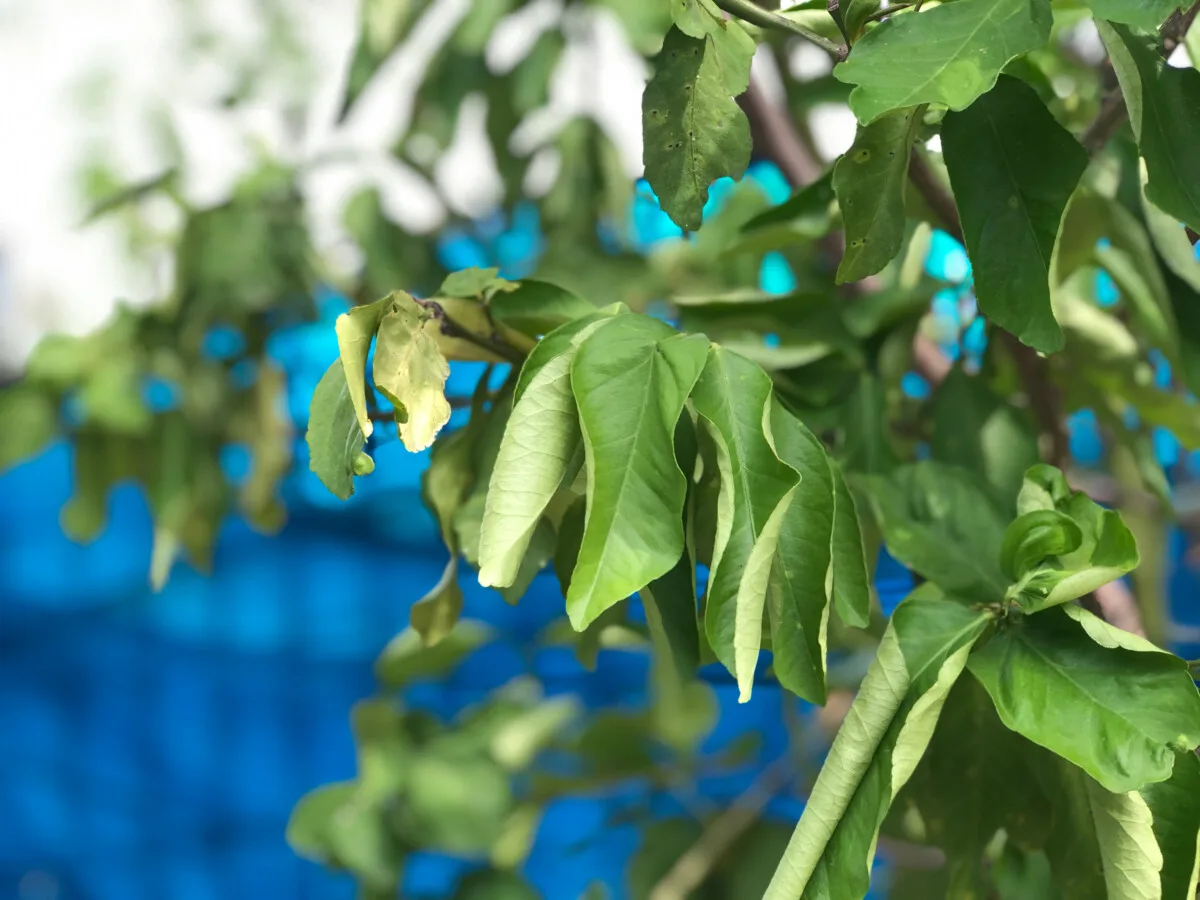
Proper watering is crucial to tree survival, especially in the early stages of a tree’s life. New trees require consistent and deep watering to establish their root systems. On the other hand, over-watering can be as harmful as under-watering, leading to oxygen-deprived roots and potential root rot. The key is to maintain a balance, providing enough water to keep the soil moist but not saturated. The frequency and amount of watering will depend on the tree species, soil type, and climate conditions.
Watch for signs of dehydration, including:
- Curling leaves
- Wilting
- Undersized leaves
- Discolored leaves
- Leaf drop
You can check the soil around your tree by digging down a few inches below the mulch and feeling the soil’s structure. It should feel cool and moist, and it should smell like fresh earth.
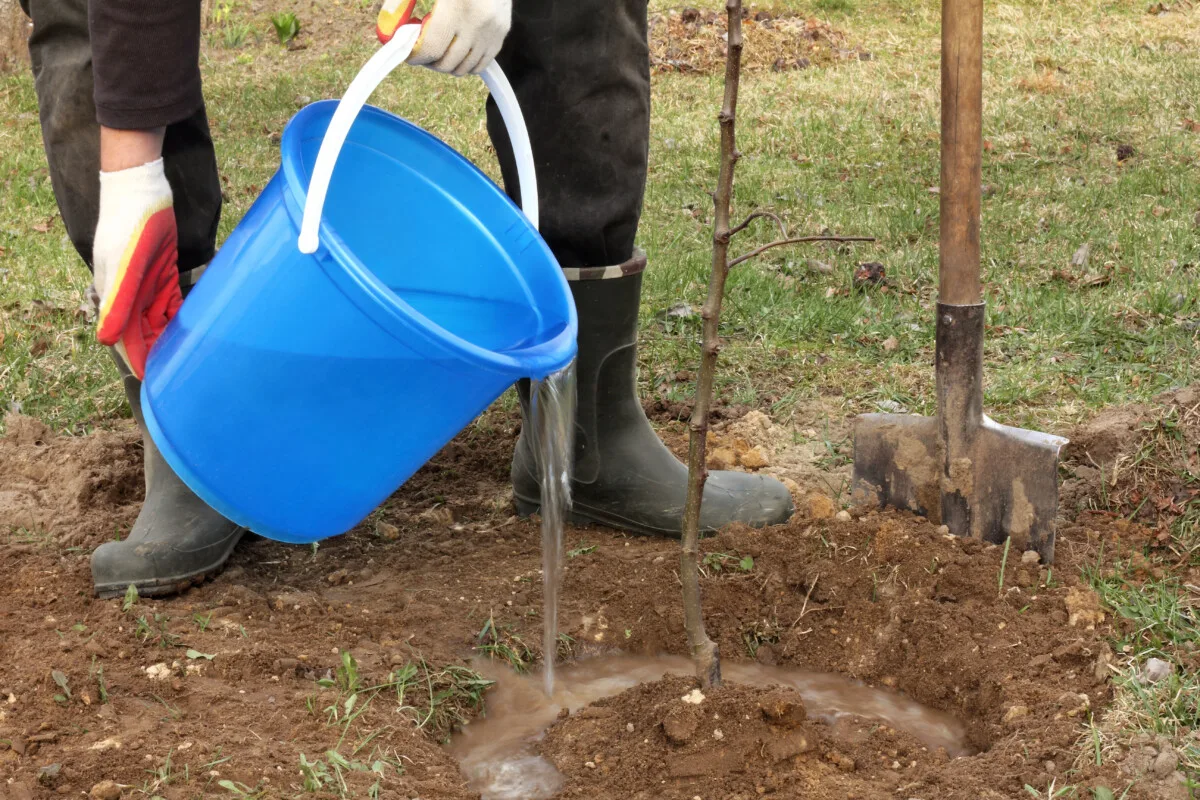
If you can’t even get a small trowel into the soil under your tree because the soil is too hard, it probably needs to be watered.
During the first growing season, it’s wise to water your young and newly planted trees on a regular basis (barring adequate rainfall, of course). Regular monitoring and adjustments are necessary to ensure the tree receives adequate hydration.
11. Failure to Follow Up
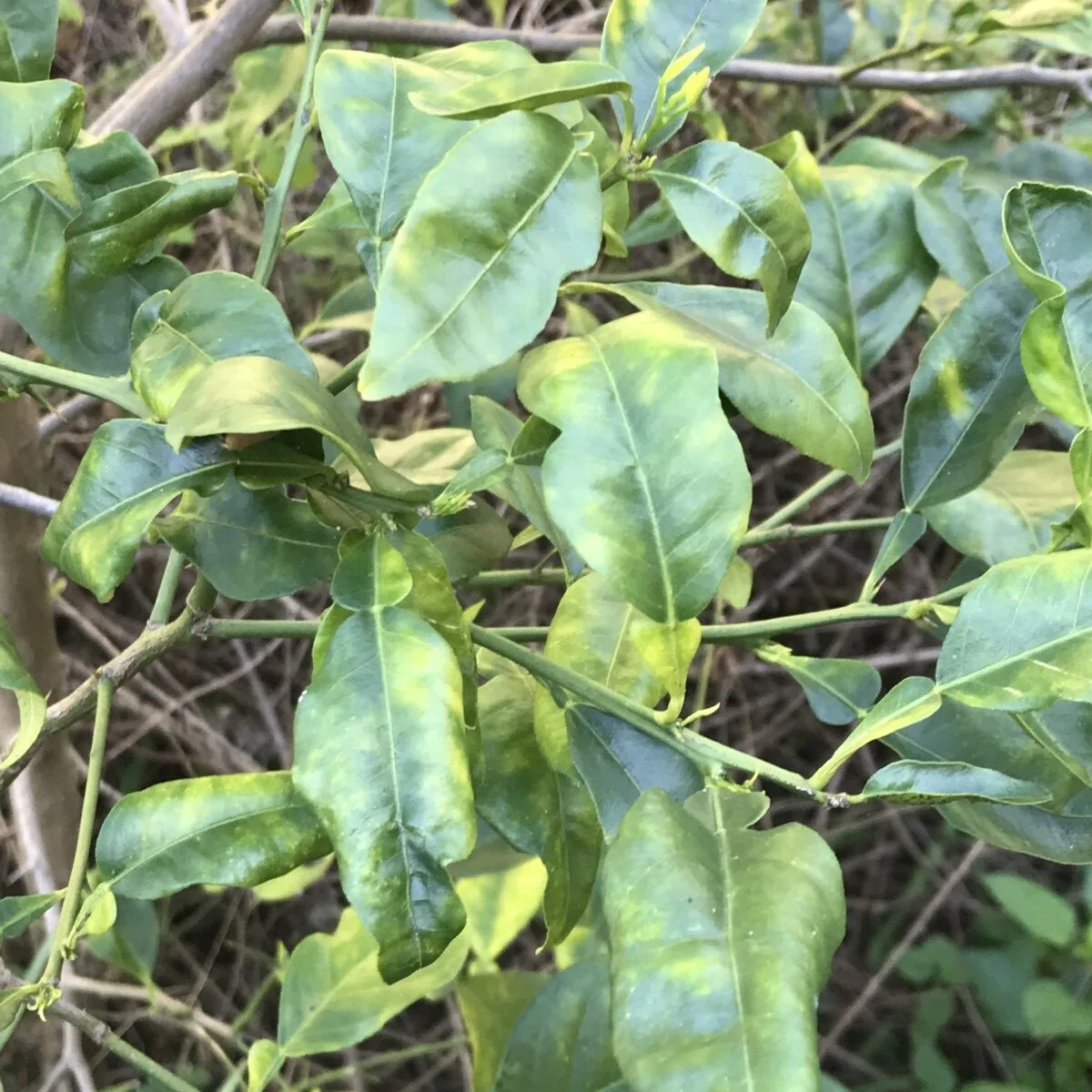
Protect your sweat equity by monitoring your tree for pests and diseases. Regular inspections can identify issues early, allowing for timely intervention.
Take the time to learn how to prune your trees to keep them in the best shape possible.
Keep tabs on the weather and provide it with a long drink when the weather is excessively hot, dry or windy.
Remember that your tree will become more self-sufficient with age, but also know that fruit trees come with a host of other requirements to ensure a healthy harvest.
Follow up by learning more about your tree. Knowing what your tree will need to stay beautiful and productive is about half the battle. The other half is making sure to follow up with the appropriate care.
What You Can Do Right
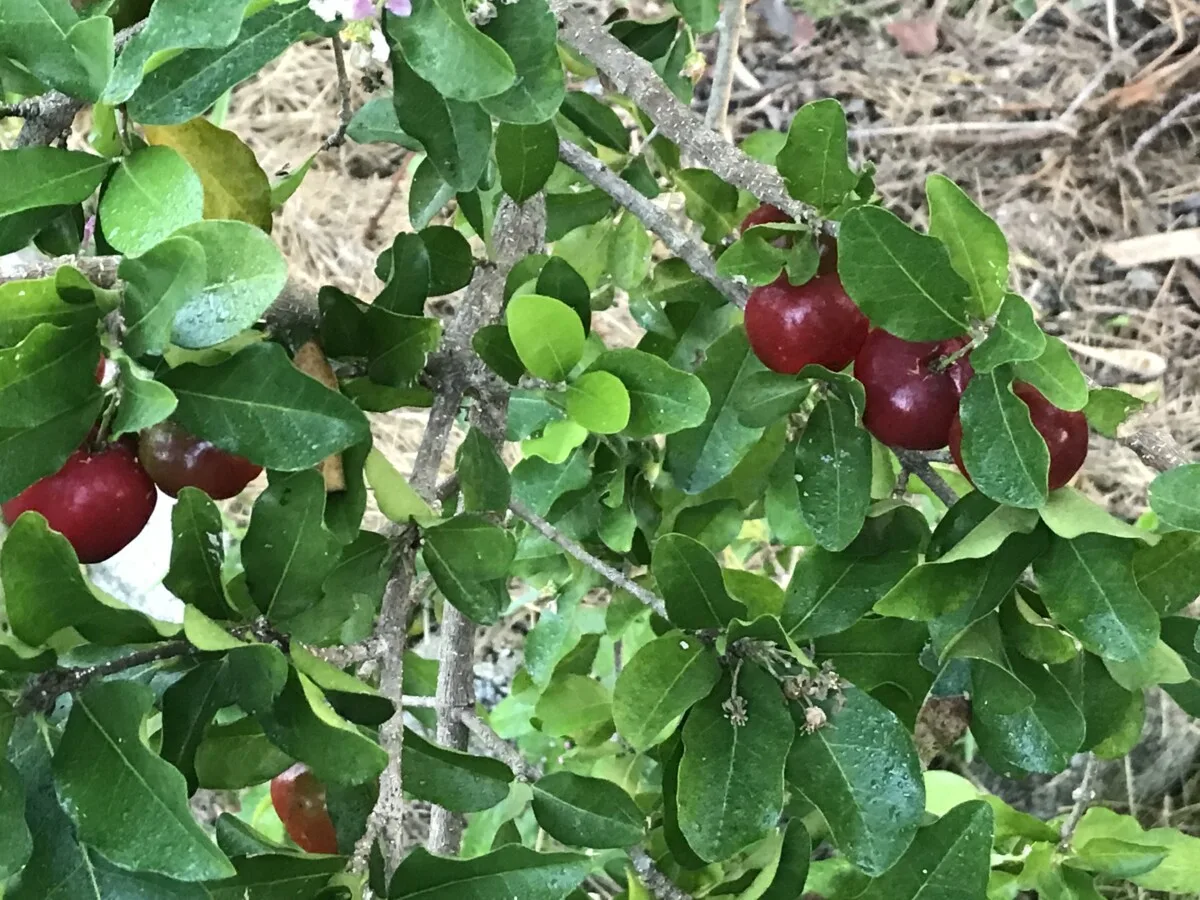
Now that you’re familiar with the most common tree-planting mistakes that gardeners make, you also have a better idea of what you can do right. First, make informed choices about the type of tree you want to plant and its needs.
While it’s easy to fall in love with a beautiful picture in a catalog, the best-informed choice you can make starting out is to choose the spot before you choose the tree.
After all, it’s easier to find a dozen trees that will flourish in your garden than it is to try to make your garden and its climate suit some “dream tree” you saw online.
Research the trees that naturally grow in your area or consult with a local nursery. Before you buy, evaluate the planting site for sunlight exposure, soil quality, and drainage.
Don’t forget about the mature size of the tree, either. Make sure there is room for it to grow to maturity without interfering with nearby buildings.
Be patient and purchase your tree for planting at the optimal time. While you may find the perfect variety in summer, you can purchase many more trees for the same money if you wait until winter and order them as dormant, bare-root trees to plant in spring.
And let’s face it, the more trees, the better.

Get the famous Rural Sprout newsletter delivered to your inbox.
Including Sunday musings from our editor, Tracey, as well as “What’s Up Wednesday” our roundup of what’s in season and new article updates and alerts.


